Reuse of excreta (alternative spelling: re-use) refers to the safe, beneficial use of animal or human excreta, i.e. feces (or faeces in British English) and urine. Such beneficial use can be as a soil conditioner or fertilizer in agriculture, gardening, aquaculture or ornamental activities. Other possible uses include use as building material, fuel source or protein production. An alternative term is also "use of excreta" rather than "reuse" as strictly speaking it is the first use of excreta, not the second time that it is used.

Reuse of excreta is one example of resource recovery of the resources contained in excreta, mainly the plant-available nutrients nitrogen, phosphorus, potassium as well as micronutrients such as sulphur and organic matter. These resources which are contained in wastewater, excreta and grey water have traditionally been reused in agriculture in many countries and are still being reused in agriculture to this day, but the practice is often carried out in an unregulated and unsafe manner for example in many developing countries (e.g. Mexico, India, Bangladesh, Ghana). The WHO Guidelines from 2006 have set up a framework how this reuse can be done safely by following a multiple barrier approach.
Multiple Barrier Concept
In the case of phosphorus in particular, reuse of excreta is one known method to recover phosphorus to mitigate the looming shortage (also known as "peak phosphorus") of economical mined phosphorus. Mined phosphorus is a limited resource that is being used up for fertiliser production at an ever-increasing rate, which is threatening worldwide food security. Therefore, phosphorus from excreta-based fertilizers is an interesting alternative to fertilizers containing mined phosphate ore.
Fertiliser characteristics of excreta
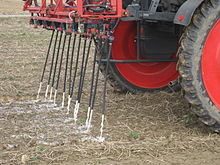
Urine
Reuse of dried feces (feces) from urine-diverting dry toilets (UDDTs) after post-treatment can result in increased crop production through fertilizing effects of nitrogen, phosphorus, potassium and improved soil fertility through organic carbon.
Composted Feces
Faecal sludge (also called septage) is defined as "coming from onsite sanitation technologies, and has not been transported through a sewer." Examples of onsite technologies include pit latrines, unsewered public ablution blocks, septic tanks and dry toilets. Faecal sludge can be treated by a variety of methods to render it suitable for reuse in agriculture. These include (usually carried out in combination): dewatering, thickening, drying (in sludge drying beds), composting, pelletisation, anaerobic digestion.
Municipal Wastewater
The use of treated sewage sludge (after treatment also called "biosolids"), as a soil conditioner or fertiliser is possible but is a controversial topic in some countries (such as USA, some countries in Europe) due to the chemical pollutants it may contain, such as heavy metals and environmental persistent pharmaceutical pollutants.
Sludge Treatment Liquid
Sludge treatment liquids (after anaerobic digestion) can be used as an input source for a process to recover phosphorus in the form of struvite for use as fertiliser. For example, the Canadian company Ostara Nutrient Recovery Technologies is marketing a process based on controlled chemical precipitation of phosphorus in a fluidized bed reactor that recovers struvite in the form of crystalline pellets from sludge dewatering streams. The resulting crystalline product is sold to the agriculture, turf and ornamental plants sectors as fertiliser under the registered trade name "Crystal Green".
Animal Manure
Pathogens
Risk Management
Indicator Organism
Policies

Harvest of peppers grown with excreta-based compost at an experimental garden of SOIL in Haiti.
Reuse of excreta is one example of resource recovery of the resources contained in excreta, mainly the plant-available nutrients nitrogen, phosphorus, potassium as well as micronutrients such as sulphur and organic matter. These resources which are contained in wastewater, excreta and grey water have traditionally been reused in agriculture in many countries and are still being reused in agriculture to this day, but the practice is often carried out in an unregulated and unsafe manner for example in many developing countries (e.g. Mexico, India, Bangladesh, Ghana). The WHO Guidelines from 2006 have set up a framework how this reuse can be done safely by following a multiple barrier approach.
Excreta-based fertilisers vary in their general properties and fertilising characteristics and include the following types: urine, dried feces, composted feces, faecal sludge (septage), municipal wastewater, sewage sludge and animal manure. Reuse of sanitised excreta in agriculture has also been called a "closing the loop" approach for sanitation and agriculture and is central to the ecological sanitation approach.
Reuse of excreta is the final step of the sanitation chain which starts with collection of excreta (by use of toilets) and continues with transport and treatment (wastewater treatment is one example) all the way to either disposal or reuse.
BackgroundMultiple Barrier Concept
Research into how to make reuse of urine and feces safe in agriculture was carried out in Sweden since the 1990s. In 2006 the World Health Organisation (WHO) provided guidelines on safe reuse of wastewater, excreta and greywater. The multiple barrier concept to reuse, which is the key cornerstone of this publication, has led to a clear understanding on how excreta reuse can be done safely. The concept is also used in water supply and food production and is generally understood as a series of treatment steps and other safety precautions to prevent the spread of pathogens.
The degree of treatment required for excreta-based fertilisers before they can safely be used in agriculture depends on a number of factors. It mainly depends on which other barriers will be put in place according to the multiple barrier concept. Such barriers might be selecting a suitable crop, farming methods, methods of applying the fertiliser, education and so forth.
For example, in the case of urine-diverting dry toilets (UDDTs) secondary treatment of dried feces can be performed at community level rather than at household level and can include thermophilic composting where faecal material is composted at over 50 °C, prolonged storage with the duration of 1.5 to two years, chemical treatment with ammonia from urine to inactivate the pathogens, solar sanitation for further drying or heat treatment to eliminate pathogens.
Peak PhosphorusIn the case of phosphorus in particular, reuse of excreta is one known method to recover phosphorus to mitigate the looming shortage (also known as "peak phosphorus") of economical mined phosphorus. Mined phosphorus is a limited resource that is being used up for fertiliser production at an ever-increasing rate, which is threatening worldwide food security. Therefore, phosphorus from excreta-based fertilizers is an interesting alternative to fertilizers containing mined phosphate ore.
Fertiliser characteristics of excreta

Application of urine on a field near Bonn, Germany, by means of flexible hose close to the soil.
Urine
Urine contains large quantities of nitrogen (mostly as urea), as well as significant quantities of dissolved phosphates and potassium, the main macronutrients required by plants. The nutrient concentrations in urine vary with diet.
Undiluted urine can chemically burn the roots of some plants which is why it is usually applied diluted with water, which also reduces odour development during application. When diluted with water (at a 1:5 ratio for container-grown annual crops with fresh growing medium each season, or a 1:8 ratio for more general use), it can be applied directly to soil as a fertilizer. The fertilization effect of urine has been found to be comparable to that of commercial fertilizers with an equivalent NPK rating. Conversely, concentrations of heavy metals such as lead, mercury and cadmium, commonly found in solid human waste, are much lower in urine.
Basil plants: The plants on the right are not fertilised, while the plants on the left are fertilised with urine - in a nutrient-poor soil
The more general limitations to using urine as fertilizer then depend mainly on the potential for buildup of excess nitrogen (due to the high ratio of that macronutrient), and inorganic salts such as sodium chloride, which are also part of the wastes excreted by the renal system. The degree to which these factors impact the effectiveness depends on the term of use, salinity tolerance of the plant, soil composition, addition of other fertilizing compounds, and quantity of rainfall or other irrigation.
Urine can also be used safely as a source of complementary nitrogen in carbon-rich compost.
Urine typically contains 70% of the nitrogen and more than half the phosphorus and potassium found in urban waste water flows, while making up less than 1% of the overall volume. Human urine can be collected with sanitation systems that utilise urinals or urine diversion toilets. Thus far, source separation, or urine diversion systems have been implemented in South Africa, China, Sweden and many other countries. Since about 2011, the Bill and Melinda Gates Foundation is providing research funding sanitation systems that recover the nutrients in urine.
Application of urine on eggplants during a comprehensive urine application field testing study at Xavier University, Philippines
"Urine management" is a relatively new way of closing the cycle of agricultural nutrient flows (also called ecological sanitation or ecosan) and - possibly - reducing sewage treatment costs and ecological consequences such as eutrophication resulting from the influx of nutrient rich effluent into aquatic or marine ecosystems. The risks of using urine as a natural source of agricultural fertilizer are generally regarded as negligible or acceptable. In fact, some research has shown that there are potentially more environmental problems and a higher energy consumption when urine is treated as part of sewage in wastewater treatment plants compared with when it is used undiluted as a resource.
It is unclear whether source separation, urine diversion, and on-site urine treatment can be made cost effective; nor whether required behavioral changes would be regarded as socially acceptable, as the largely successful trials performed in Sweden may not readily generalize to other industrialized societies. In developing countries the use of whole raw sewage (night soil) has been common throughout history, yet the application of pure urine to crops is rare. Increasingly there are calls for urine's use as a fertilizer, such as a Scientific Americanarticle "Human urine is an effective fertilizer".
If urine is to be collected for use as a fertiliser in agriculture, then the easiest method of doing so is (in increasing order of costs) by using waterless urinals, urine-diverting dry toilets (UDDTs) or urine diversion flush toilets.
Examples
- Swedish researchers reported that in Tororo District in eastern Uganda - a region with severe land degradation problems - smallholder farmers are appreciating urine fertilization as a low-cost and low-risk practice which can contribute to significant yield increases. The importance of social norms and cultural perceptions needs to be recognized but are not absolute barriers to adoption of the practice.
Reuse of dried feces (feces) from urine-diverting dry toilets (UDDTs) after post-treatment can result in increased crop production through fertilizing effects of nitrogen, phosphorus, potassium and improved soil fertility through organic carbon.
Composted Feces
Compost derived from composting toilets (where organic kitchen waste is in some cases also added to the composting toilet), has in principal the same uses as compost derived from other organic waste products, such as sewage sludge or municipal organic waste. One limiting factor may be legal restrictions due to the possibility that pathogens remain in the compost. In any case, the use of compost from composting toilets in one's own garden can be regarded as safe and is the main method of use for compost from composting toilets. Hygienic measures for handling of the compost must be applied by all those people who are exposed to it, e.g. wearing gloves and boots.
Cabbage grown in excreta-based compost (left) and without soil amendments (right), SOIL in Haiti
Some of the urine will be part of the compost, although some urine will be lost via leachate and evaporation. Urine can contain up to 90 percent of the nitrogen, up to 50 percent of the phosphorus, and up to 70 percent of the potassium present in human excreta.
The nutrients in compost from a composting toilet have a higher plant availability than the product (dried feces) from a urine-diverting dry toilet.
Faecal SludgeFaecal sludge (also called septage) is defined as "coming from onsite sanitation technologies, and has not been transported through a sewer." Examples of onsite technologies include pit latrines, unsewered public ablution blocks, septic tanks and dry toilets. Faecal sludge can be treated by a variety of methods to render it suitable for reuse in agriculture. These include (usually carried out in combination): dewatering, thickening, drying (in sludge drying beds), composting, pelletisation, anaerobic digestion.
Municipal Wastewater
Work by the International Water Management Institute has led to guidelines on how reuse of municipal wastewater (ideally not containing significant industrial wastewater, can be safely implemented in low income countries.
One example for reuse of excreta via the sewage route - which may however not meet safety and environmental standards - are the East Kolkata Wetlands. These wetlands are used to treat Kolkata's sewage, and the nutrients contained in the wastewater sustain fish farms and agriculture.
Sewage SludgeThe use of treated sewage sludge (after treatment also called "biosolids"), as a soil conditioner or fertiliser is possible but is a controversial topic in some countries (such as USA, some countries in Europe) due to the chemical pollutants it may contain, such as heavy metals and environmental persistent pharmaceutical pollutants.
Sludge Treatment Liquid
Sludge treatment liquids (after anaerobic digestion) can be used as an input source for a process to recover phosphorus in the form of struvite for use as fertiliser. For example, the Canadian company Ostara Nutrient Recovery Technologies is marketing a process based on controlled chemical precipitation of phosphorus in a fluidized bed reactor that recovers struvite in the form of crystalline pellets from sludge dewatering streams. The resulting crystalline product is sold to the agriculture, turf and ornamental plants sectors as fertiliser under the registered trade name "Crystal Green".
Animal Manure
Animal dung (manure) has been used for centuries as a fertilizer for farming, as it improves the soil structure (aggregation), so that it holds more nutrients and water, and becomes more fertile. Animal manure also encourages soil microbial activity, which promotes the soil's trace mineral supply, improving plant nutrition. It also contains some nitrogen and other nutrients that assist the growth of plants.
Manures with a particularly unpleasant odor (such as slurry from intensive pig farming), are usually knifed (injected) directly into the soil to reduce release of the odor. Manure from pigs and cattle is usually spread on fields using a manure spreader. Due to the relatively lower level of proteins in vegetable matter, herbivore manure has a milder smell than the dung of carnivores or omnivores. However, herbivore slurry that has undergone anaerobic fermentation may develop more unpleasant odors, and this can be a problem in some agricultural regions. Poultry droppings are harmful to plants when fresh but, after a period of composting, are valuable fertilizers.
Manure is also commercially composted and bagged and sold retail as a soil amendment.
Health and environmental aspectsPathogens
Risk Management
Exposure by farm workers to untreated excreta constitute a significant health risk due to its pathogen content. This risk also extends to consumers of crops fertilised with untreated excreta. Therefore, excreta need to be appropriately treated before reuse, and health aspects need to be managed for all reuse applications as the excreta can contain pathogens even after treatment.
Gardeners of Fada N'Gourma in Burkina Faso apply dry excreta after mixing with other organic fertilizer (donkey manure, cow manure) and pure fertile soil, and after maturing for another 2 to 4 months.
Treatment of excreta for pathogen removal
The treatment of excreta and wastewater for pathogen removal can take place:
- at the toilet itself (for example urine collected from urine-diverting dry toilets is often treated by simple storage at the household level); or
- at a semi-centralised level for example by composting ; or
- at a fully centralised level at sewage treatment plants and sewage sludge treatment plants.
As an indicator organism in reuse schemes, helminth eggs are commonly uses as these organisms are the most difficult to destroy in most treatment processes. The multiple barrier approach is recommended where e.g. lower levels of treatment may be acceptable when combined with other post-treatment barriers along the sanitation chain.
Pharmaceutical residues
Exreta from humans and farmed animals contain hormones and pharmaceutical residues which could in theory enter the food chain via fertilised crops but are currently not fully removed by conventional wastewater treatment plants anyway and can enter drinking water sources via household wastewater (sewage). In fact, the pharmaceutical residues in the excreta are degraded better in terrestrial systems (soil) than in aquatic systems.
Nitrate pollution
Only a fraction of the nitrogen-based fertilizers is converted to produce and other plant matter. The remainder accumulates in the soil or lost as run-off. This also applies to excreta-based fertilizer since it also contains nitrogen. Excessive nitrogen which is not taken up by plants is transformed into nitrate which is easily leached.mHigh application rates combined with the high water-solubility of nitrate leads to increased runoff into surface water as well as leaching into groundwater. Nitrate levels above 10 mg/L (10 ppm) in groundwater can cause 'blue baby syndrome'(acquired methemoglobinemia). The nutrients, especially nitrates, in fertilizers can cause problems for natural habitats and for human health if they are washed off soil into watercourses or leached through soil into groundwater.
Comparison of excreta-based fertilisers to other fertilisers
Fertilising elements of organic fertilisers are mostly bound in carbonaceous reduced compounds. If these are already partially oxidized as in the compost, the fertilizing minerals are adsorbed on the degradation products (humic acids) etc. Thus, they exhibit a slow-release effect and are usually less rapidly leached compared to mineral fertilisers.
Comparison of spinach field with (left) and without (right) compost, experiments at the SOIL farm in Port-au-Prince, Haiti
Mineral fertilisers are made from mining activities and can contain heavy metals. Phosphate ores contain heavy metals such as cadmium and uranium, which can reach the food chain via mineral phosphate fertilizer. This does not apply for excreta-based fertilisers.
In intensive agricultural land use, animal manure is seen more critically than mineral fertiliser as it is often not used as targeted as mineral fertilizers and thus the nitrogen utilization efficiency is poor. Animal manure can become a problem in terms of excessive use in areas of intensive agriculture with high numbers of livestock and too little available farmland.
Other uses of excreta
Apart from use in agriculture, there are other possible uses of excreta. For example, in the case of faecal sludge, it can be treated and then serve as protein (black soldier fly process), fodder, fish food, building materials and biofuels (biogas from anaerobic digestion, incineration or co-combustion of dried sludge, pyrolysis of faecal sludge, biodiesel from faecal sludge).
Dry feces for combustion
Dry animal dung is used as a fuel in many countries around the world.
Pilot scale research in Uganda and Senegal has shown that it is viable to use dry feces as for combustion in industry, provided it has been dried to a minimum of 28% dry solids.
Production of animal protein
Pilot facilities are being developed for feeding Black Soldier Fly larvae with feces to produce protein as a feed for chickens in South Africa.
Biogas
Small-scale biogas plants exist in several countries, e.g. Ghana, utilising mixed animal and human feces, and larger centralised systems are being planned. The same use of excreta - when it is mixed with domestic wastewater - takes place in the anaerobic digesters of centralised sewage treatment plants where sewage sludge is digested and biogas is produced. This biogas is used for heating the digesters and for electricity generation.
Building materials
It is known that additions of fecal matter up to 20% by dried weight in clay bricks does not make a significant functional difference to bricks, and a company called Encos in the UK has been experimenting with producing bricks from feces.
Society and culturePolicies
There is still a lack of examples of implemented policy where the reuse aspect is fully integrated in policy and advocacy. When considering drivers for policy change in this respect, the following lessons learned should be taken into consideration: Revising legislation does not necessarily lead to functioning reuse systems; it is important to describe the “institutional landscape” and involve all actors; parallel processes should be initiated at all levels of government i.e. national, regional and local level); country specific strategies and approaches are needed; and strategies supporting newly developed policies need to be developed.
Regulations
In countries that export agricultural products, excreta reuse as a means to reuse nutrients may be hindered by regulations in countries to which they export.
Urine use in organic farming in Europe
The European Union (EU) only allows the use of source separated urine in conventional farming within the EU, but not yet in organic farming. This is a situation that many agricultural experts, especially in Sweden, would like to see changed. This ban may also reduce the options to use urine as a fertilizer in other countries if they wish to export their products to the EU.
Dried feces from UDDTs in the U.S.
In the United States, the EPA regulation governs the management of sewage sludge but has no jurisdiction over the byproducts of a urine-diversion dry toilet (UDDT). Oversight of these materials falls to the states.
Examples
Haiti
The NGO SOIL in Haiti began building urine-diverting dry toilets and composting the waste produced for agricultural use in Haiti in 2006. SOIL’s two composting waste treatment facilities currently transform over 20,000 gallons (75,708 liters) of human excreta into safe, organic, agricultural-grade compost every month. The compost produced at these facilities is sold to farmers, organizations, businesses, and institutions around the country to help finance SOIL’s waste treatment operations. Crops grown with this soil amendment include spinach, peppers, sorghum, maize, and more. Each batch of compost produced is tested for the indicator organism E. Coli to ensure that complete pathogen kill has taken place during the thermophilic composting process.
References- ^ a b c d e WHO (2006). WHO Guidelines for the Safe Use of Wastewater, Excreta and Greywater - Volume IV: Excreta and greywater use in agriculture. World Health Organization (WHO), Geneva, Switzerland
- ^ Tilley, E., Ulrich, L., Lüthi, C., Reymond, Ph., Zurbrügg, C. Compendium of Sanitation Systems and Technologies - (2nd Revised Edition). Swiss Federal Institute of Aquatic Science and Technology (Eawag), Duebendorf, Switzerland. ISBN 978-3-906484-57-0.
- ^ a b Joensson, H., Richert Stintzing, A., Vinneras, B., Salomon, E. (2004). Guidelines on the Use of Urine and Faeces in Crop Production. Stockholm Environment Institute, Sweden
- ^ a b Richert, A., Gensch, R., Jönsson, H., Stenström, T., Dagerskog, L. (2010). Practical guidance on the use of urine in crop productio. Stockholm Environment Institute (SEI), Sweden
- ^ a b c Rieck, C., von Münch, E., Hoffmann, H. (2012). Technology review of urine-diverting dry toilets (UDDTs) - Overview on design, management, maintenance and costs. Deutsche Gesellschaft fuer Internationale Zusammenarbeit (GIZ) GmbH, Eschborn, Germany Cite error: Invalid
<ref>tag; name ":1" defined multiple times with different content (see the help page). - ^ Niwagaba, C. B. (2009). Treatment technologies for human faeces and urine. PhD thesis, Swedish University of Agricultural Sciences, Uppsala, Sweden
- ^ Soil Association (2010). A rock and a hard place - Peak phosphorus and the threat to our food security. Soil Association, Bristol, UK
- ^ a b Morgan, Peter (2004). "10. The Usefulness of urine". An Ecological Approach to Sanitation in Africa: A Compilation of Experiences (CD release ed.). Aquamor, Harare, Zimbabwe. Retrieved 6 December 2011.
- ^ a b Steinfeld, Carol (2004). Liquid Gold: The Lore and Logic of Using Urine to Grow Plants. Ecowaters Books. ISBN 978-0-9666783-1-4.
- ^ a b M. Johansson; Jönsson, H.; Höglund, C.; Richert Stintzing, A.; Rodhe, L. (2001). "Urine Separation – Closing the Nitrogen Cycle"(PDF). Stockholm Water Company. Cite uses deprecated parameter
|coauthors=(help). - ^ von Muench, E., Spuhler, D., Surridge, T., Ekane, N., Andersson, K., Fidan, E. G., Rosemarin, A. (2013). Sustainable Sanitation Alliance members take a closer look at the Bill & Melinda Gates Foundation’s sanitation grants. Sustainable Sanitation Practice (SSP) Journal, Issue 17, EcoSan Club, Austria
- Documents on reuse of excreta in the library of the Sustainable Sanitation Alliance.
- Photos on reuse of excreta, in photo database of the Sustainable Sanitation Alliance.
- Wikipedia

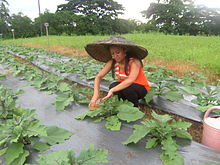
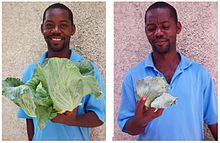
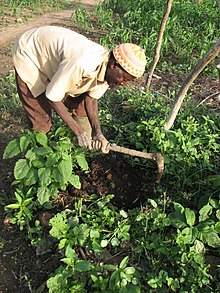
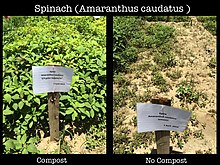





No comments:
Post a Comment